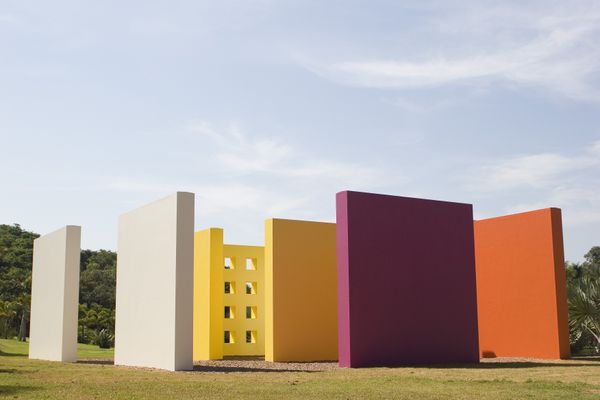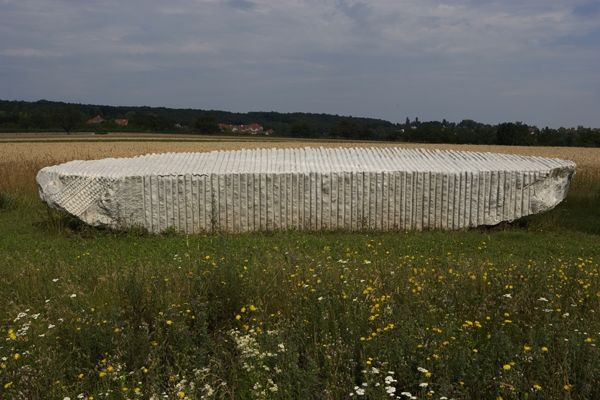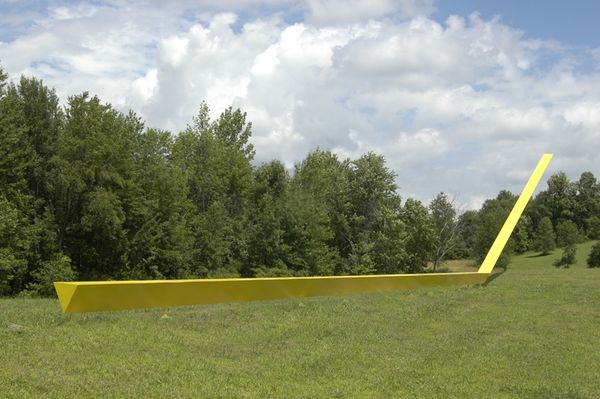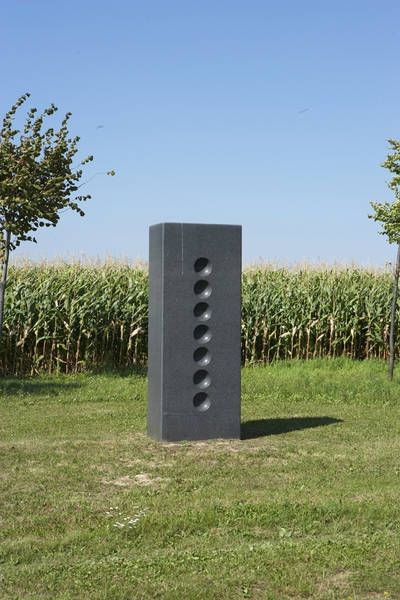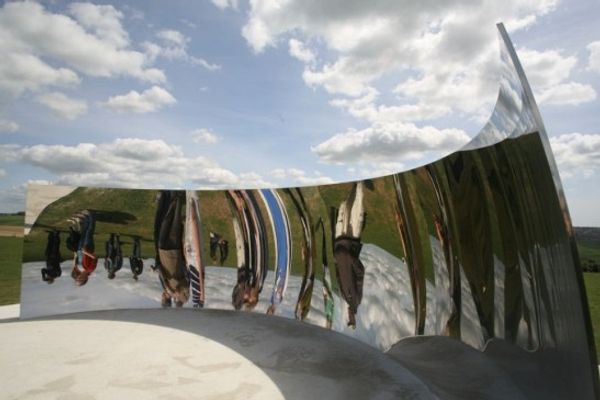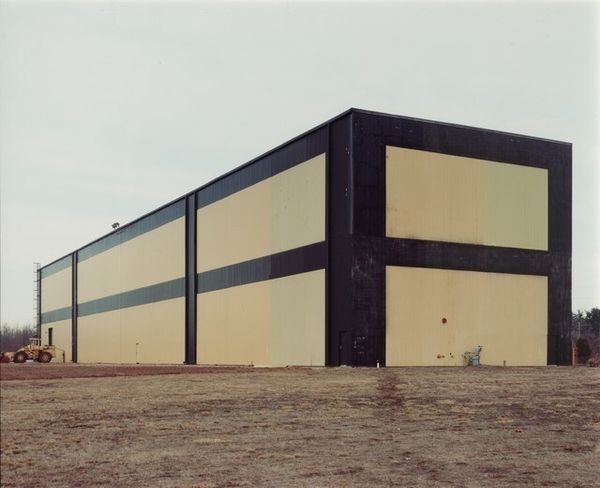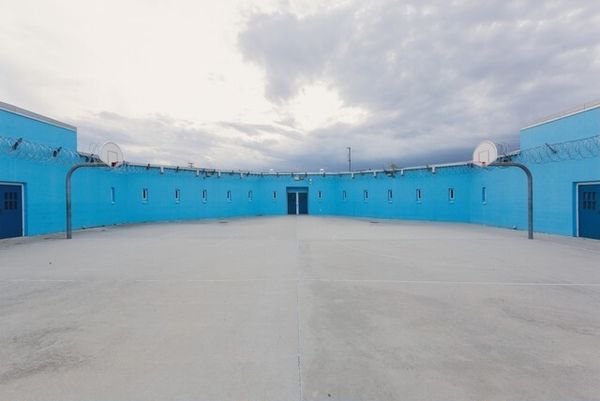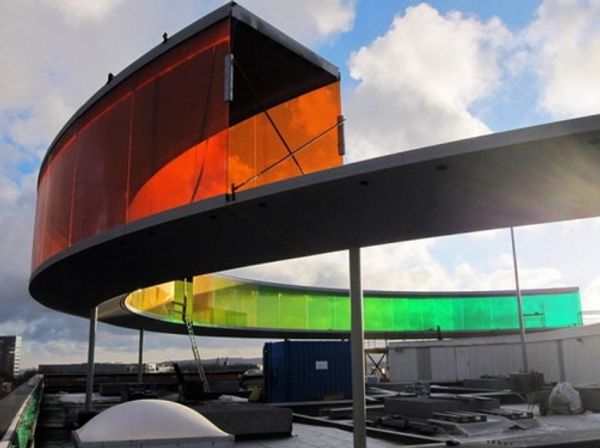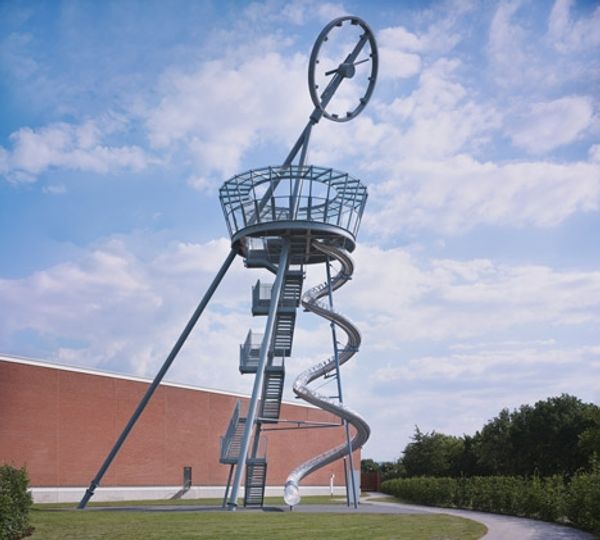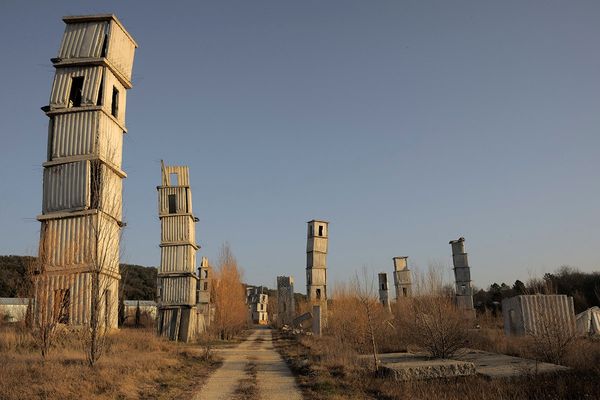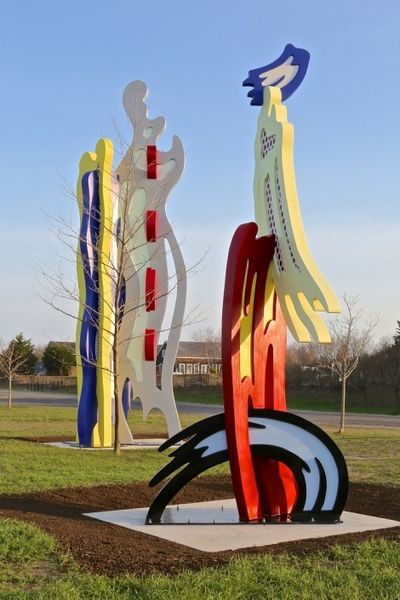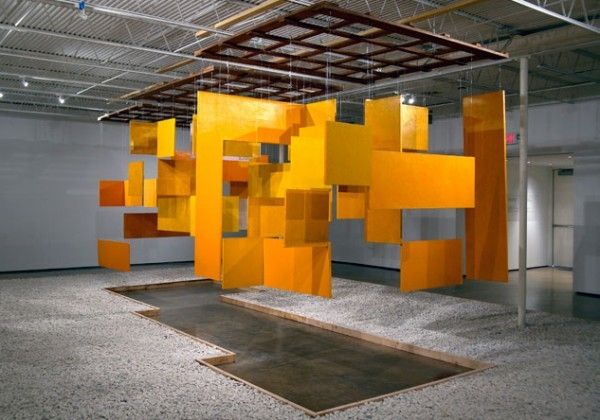
site-specific, installation-art, architecture
#
landscape
#
geometric
#
site-specific
#
installation-art
#
line
#
architecture
Copyright: Olafur Eliasson,Fair Use
Editor: Here we have Olafur Eliasson's "The movement meter for Lernacken," created in 2000. It looks like a site-specific installation made with geometric structures and panels of various colors. It has a somewhat desolate, otherworldly feel to it, almost like landing on an abandoned outpost. What do you see in this piece? Curator: Structurally, I find it compelling how Eliasson plays with positive and negative space. Notice the intricate latticework forming the curved walls. These are broken up into modular sections displaying different color themes and densities which impact the visual rhythm and depth of field. Consider the relationship between the man-made form and the existing landscape, each simultaneously defining and being defined by the other. Editor: It does feel like the sculpture interacts with the landscape. Are you thinking about the shape or about how light passes through? Curator: Indeed, both. Focus first on the form itself: The circular layout broken by visual events gives a powerful shape that pulls the eye around its entirety. Secondly, light permeates and alters the immediate ground with shadows which change across time; this gives further impact to our overall engagement as viewers. Would you agree? Editor: That makes sense! I never thought to examine this relationship, so, closely, but I do now! Curator: Precisely. Eliasson here is not only constructing something for us, he makes a comment on architecture versus nature, light against shadow, geometric order and spatial freedom as philosophical opposites – yet existing side-by-side. Editor: I learned how the colors of individual frames break up what I thought to be a fairly simply layout; it offers many ways to appreciate form in sculpture and in context. Curator: Exactly. Hopefully it reminds people to notice such intricate relationships outside art institutions and throughout their immediate environments.
Comments
No comments
Be the first to comment and join the conversation on the ultimate creative platform.
